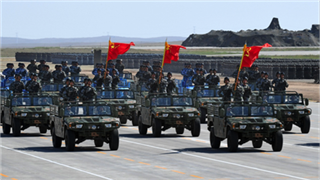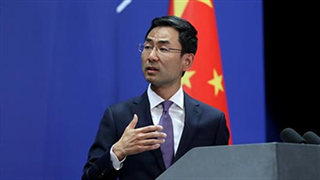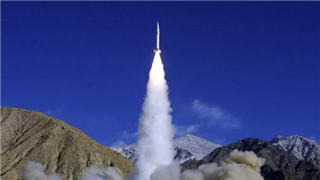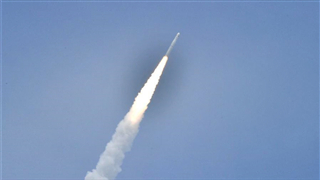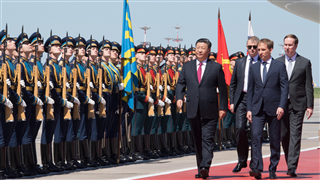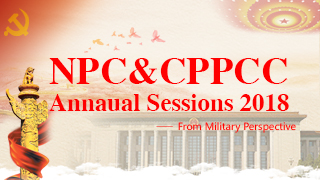By Li Zheng
The United States has recently been busy selling its “Indo-Pacific Strategy”. The new “Indo-Pacific Strategy Report” issued by the US Department of Defense (DOD) on June 1, 2019, is the most detailed official statement about the strategy by the US government to date. On the same day, the US Acting Defense Secretary Patrick Shanahan elaborated on the basic concept of the “Indo-Pacific Strategy” at the Shangri-La Dialogue in Singapore, directly asking Asian allies to increase security spending, and listed a series of specific requirements to follow the example of the United States.
The above actions have released contradictory signals to the Indo-Pacific countries. On the one hand, the United States seems to have determined the core elements of the “Indo-Pacific Strategy”, that is, “freedom and openness” as the principle, preventing “other countries from challenging the order of the Indo-Pacific region” as the goal, “improving coping capacity, deterrence and joint operations” as the approach. In other words, the “Indo-Pacific Strategy” is “an insurance policy” prepared by the US in advance, in case of “significant accidental injuries” in the region.
On the other hand, the United States does not seem to intend to invest too much in this “far-reaching” and “significant” strategy, and hopes that its Asian allies and partners could “share the responsibility jointly and reasonably.” Although the insurance will protect the United States for a major part, the United States still hopes that its Asian allies will afford as much funding as possible for this warranty.
In view of this, the “Indo-Pacific Strategy” has become a crowd-funding accident insurance imposed on Asian countries by the United States. But the so-called accident the “Indo-Pacific Strategy” guarded is one of the most unlikely scenarios in the region, whereas Asian countries are required to pay the very first before joining this collective insurance policy.
With the “Indo-Pacific Strategy”, The United States has made an ideal scheme for the vast Asian, Latin American and Pacific regions.
In 2017, US President Donald Trump stated in his speech at the Asia-Pacific Economic Cooperation (APEC) CEO Summit in Da Nang, Vietnam that the US would like to establish a solid trade relationship with the countries in the region on the basis of “justness and reciprocity”, and drive economic growth by “providing high-quality infrastructure investment”. However, the promise has not been fulfilled so far.
In 2018, US Secretary of State Mike Pompeo announced that the United States would invest in “digital networks, energy and infrastructure” in the region. However, the investment project is only $113 million, even inadequate for paying consulting fees to US consulting companies.
Today, the US proposed another bill to “promote investment-guided development”, which offers $60 billion overseas investment each year. However, due to trade wars and geopolitical tensions, the US has actually not increased its investment in Indo-Pacific countries.
In contrast, the vast majority of Asian countries have seen another “Indo-Pacific Strategy” that the US officials have not revealed. The “fairness and reciprocity” pursued by this strategy is based on the trade bullying unilaterally launched by the United States; its “freedom and openness” means allowing American enterprises to have the opportunity to get access with no hindrance, while other enterprises were left no way to go; and its “improvement of coping capacity” is premised on increasing defense spending from other countries.
The United States is obviously eager to maintain its privileges and status in this region, but does not want to assume corresponding responsibilities and obligations. This is not the regional situation expected by the vast Asian countries.
What is even more dangerous is that the main conditions for the United States to achieve its “Indo-Pacific Strategy” are the tenser geopolitical situation in the region, with so-called “challenges to the order of the Indo-Pacific region from other countries”. Only in this case may the US current strategy of “making the other countries follow the United States and stand on the right side” seem to be somewhat feasible.
The vast majority of Asian countries are worried that the United States may not passively wait for the situation to develop in this direction, but may take actions to prompt the situation towardsits anticipations. Possible actions like asking Asian countries to increase military spending and increasing the possibility of an arms race in this region will arouse the vigilance of the countries concerned.
The vast majority of Asian, Latin American and Pacific countries want to see a more globalized and multi-polarized Indo-Pacific order centered on regional organizations and supporting free trade, which was the goal of the United States in the past. But today, the United States is no longer confident enough in adhering to this goal, the main reason of which is that multi-polarization has shocked the US’ hegemony and privileges.
In the event of a conflict between actual interests and pursuit of ideas, the United States has put material gains above justice without hesitation. The United States no longer supports and promotes the multi-polar development in the region through differentiated treatment. The major countries in the region such as China, India, and Japan, have become main targets for the US to “get cash back after investment”. Compared with the United States, China’s regional propositions and ideas share more common grounds with long-term demands of other Asian countries, which is also a case that the United States cannot tolerate.
As China continues to develop good relations with neighboring countries and properly resolve sensitive issues related with surrounding areas, the “security anxiety” sold by the United States is losing market in this region.
As the North Korean nuclear crisis cools down, the United States is eager to find next entry point to provoke the regional situation here. The strategic significance of maritime disputes in the region becomes once again prominent to the United States. The US Acting Defense Secretary’s rebuttal against China at the Shangri-La Dialogue and the “Indo-Pacific Strategy Report” issued by the US DOD are nothing more than another drama, through which the United States is trying to instigate and sow discord between China and its neighboring countries. Will the scheme work this time?
Definitely not.
(The author is an associate researcher with the American Institute in China Institutes of Contemporary International Relations)
